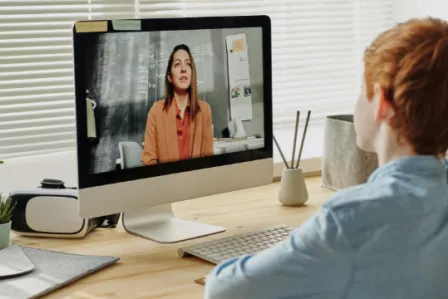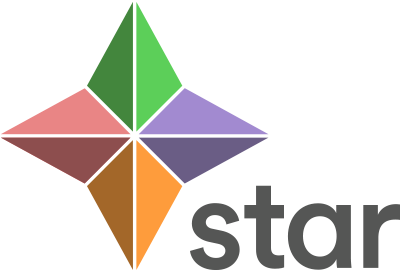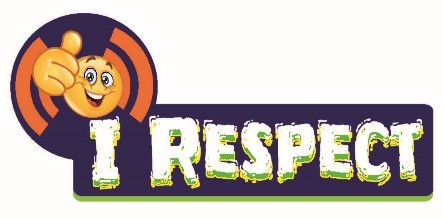Some people have difficulties getting on the digital train. They have little or no access to digital media, are frequently confronted in their environment with an attitude of avoidance or negativity towards digital media, and lack knowledge about these media, all of which deprive them of the right to participate fully in the digital society.

Child Focus gives great importance to the concept of inclusion. This means that it aims to enable all children, in the name of their rights, to participate in the digital society, without exclusion on any grounds. This also means that every child is unique. That is why Child Focus does not believe in ‘one size fits all’, but rather wants to put the permanent exploration of different possibilities at the heart of their (preventive) work.
Digital for everyone
Some people in society are considered more vulnerable than others, for example children with disabilities, children on the run, or those growing up in poverty or in an institution. However, their use and access to digital media are rarely studied. This is a missed opportunity. After all, the limited research and extensive fieldwork have shown that digital media can be a great tool for young people with autism spectrum disorders (ASD).
For example, digital media can lead to a better quality of life. People with ASD have difficulties with social interactions, so online tools can be particularly powerful tools to overcome barriers and support communication. Nevertheless, it seems that the most vulnerable young people offline also face the highest risks online. People with disabilities, for example, are more often victims of cyberbullying and abusive sexting (Nijs & Drooghmans, 2019). However, these vulnerable young people should also be offered online support.
It is therefore very important that parents, carers and teachers talk to children about the different tools for a safe and fun use of digital media.
Person of trust
It is essential that every young person has in their environment a person of trust to turn to, thus every organisation should set up a person of trust for each young person or child in their organisation.
Moreover, organisations should encourage young people to talk to this person of trust if they feel uncomfortable with someone or something that has happened or is happening. They may feel ashamed and that it is a big step to take, but there is a real sense of relief when they have confided in someone. There are also organisations like Child Focus which they can contact day and night at 116 000 if they seek for someone to talk to. But remember, talking can take many forms, not only verbally but also visually by creating a ‘space of trust’ and offering young people different possibilities to tell their story.
STAR
For young people with an autism spectrum disorder, using the internet can translate to a better quality of life. They experience difficulties in their social interactions, and online tools can be particularly powerful tools to overcome barriers and facilitate communication.
Nevertheless, it seems that children and young people with disabilities are more exposed to online risks, as they are more likely than others to have a limited ability to mobilise their intuition and social intelligence, qualities that are constantly in demand online.
Therefore, Child Focus has developed STAR. STAR is an online educational tool that promotes safe and responsible internet use among 10-14-year-olds with autism spectrum disorders. This free tool can be used by professionals in institutions, as well as in inclusive and special education. STAR can be used in groups as well as in individual coaching.The objective is to open a dialogue on various subjects such as privacy settings, online and offline friends, challenges, and sexting. The attached teaching notes contain in-depth questions and provide guidance throughout the module.

Facilitators can create an account via www.childfocus-star.be which is linked to the account of the participant(s). Young people can create an account via www.childfocus-star.be/ga.
If you have any questions about STAR, you can contact Child Focus at training@childfocus.org.
iRespect
iRespect is an educational tool for 10-14-year-olds on online privacy. This free tool can be used by professionals in inclusive and special education. iRespect can be used both in groups and in individual coaching. The kit consists of 10 prevention videos, each dealing with a different aspect of privacy. Each video is accompanied by an educational sheet, with in-depth questions, to guide you through the tool.

The tool can be accessed here. For questions about iRespect, contact Child Focus at training@childfocus.org.
Find out more about the work and initiatives of the Belgian Safer Internet Centre or find similar information for Safer Internet Centres throughout Europe. On the Better Internet for Kids (BIK) platform, additional useful tools for parents, carers and teachers can be found in the resource repository and in the Guide to apps section.
Some people have difficulties getting on the digital train. They have little or no access to digital media, are frequently confronted in their environment with an attitude of avoidance or negativity towards digital media, and lack knowledge about these media, all of which deprive them of the right to participate fully in the digital society.

Child Focus gives great importance to the concept of inclusion. This means that it aims to enable all children, in the name of their rights, to participate in the digital society, without exclusion on any grounds. This also means that every child is unique. That is why Child Focus does not believe in ‘one size fits all’, but rather wants to put the permanent exploration of different possibilities at the heart of their (preventive) work.
Digital for everyone
Some people in society are considered more vulnerable than others, for example children with disabilities, children on the run, or those growing up in poverty or in an institution. However, their use and access to digital media are rarely studied. This is a missed opportunity. After all, the limited research and extensive fieldwork have shown that digital media can be a great tool for young people with autism spectrum disorders (ASD).
For example, digital media can lead to a better quality of life. People with ASD have difficulties with social interactions, so online tools can be particularly powerful tools to overcome barriers and support communication. Nevertheless, it seems that the most vulnerable young people offline also face the highest risks online. People with disabilities, for example, are more often victims of cyberbullying and abusive sexting (Nijs & Drooghmans, 2019). However, these vulnerable young people should also be offered online support.
It is therefore very important that parents, carers and teachers talk to children about the different tools for a safe and fun use of digital media.
Person of trust
It is essential that every young person has in their environment a person of trust to turn to, thus every organisation should set up a person of trust for each young person or child in their organisation.
Moreover, organisations should encourage young people to talk to this person of trust if they feel uncomfortable with someone or something that has happened or is happening. They may feel ashamed and that it is a big step to take, but there is a real sense of relief when they have confided in someone. There are also organisations like Child Focus which they can contact day and night at 116 000 if they seek for someone to talk to. But remember, talking can take many forms, not only verbally but also visually by creating a ‘space of trust’ and offering young people different possibilities to tell their story.
STAR
For young people with an autism spectrum disorder, using the internet can translate to a better quality of life. They experience difficulties in their social interactions, and online tools can be particularly powerful tools to overcome barriers and facilitate communication.
Nevertheless, it seems that children and young people with disabilities are more exposed to online risks, as they are more likely than others to have a limited ability to mobilise their intuition and social intelligence, qualities that are constantly in demand online.
Therefore, Child Focus has developed STAR. STAR is an online educational tool that promotes safe and responsible internet use among 10-14-year-olds with autism spectrum disorders. This free tool can be used by professionals in institutions, as well as in inclusive and special education. STAR can be used in groups as well as in individual coaching.The objective is to open a dialogue on various subjects such as privacy settings, online and offline friends, challenges, and sexting. The attached teaching notes contain in-depth questions and provide guidance throughout the module.

Facilitators can create an account via www.childfocus-star.be which is linked to the account of the participant(s). Young people can create an account via www.childfocus-star.be/ga.
If you have any questions about STAR, you can contact Child Focus at training@childfocus.org.
iRespect
iRespect is an educational tool for 10-14-year-olds on online privacy. This free tool can be used by professionals in inclusive and special education. iRespect can be used both in groups and in individual coaching. The kit consists of 10 prevention videos, each dealing with a different aspect of privacy. Each video is accompanied by an educational sheet, with in-depth questions, to guide you through the tool.

The tool can be accessed here. For questions about iRespect, contact Child Focus at training@childfocus.org.
Find out more about the work and initiatives of the Belgian Safer Internet Centre or find similar information for Safer Internet Centres throughout Europe. On the Better Internet for Kids (BIK) platform, additional useful tools for parents, carers and teachers can be found in the resource repository and in the Guide to apps section.
- online safety education digital citizenship
Related content
- < Previous article
- Next article >












